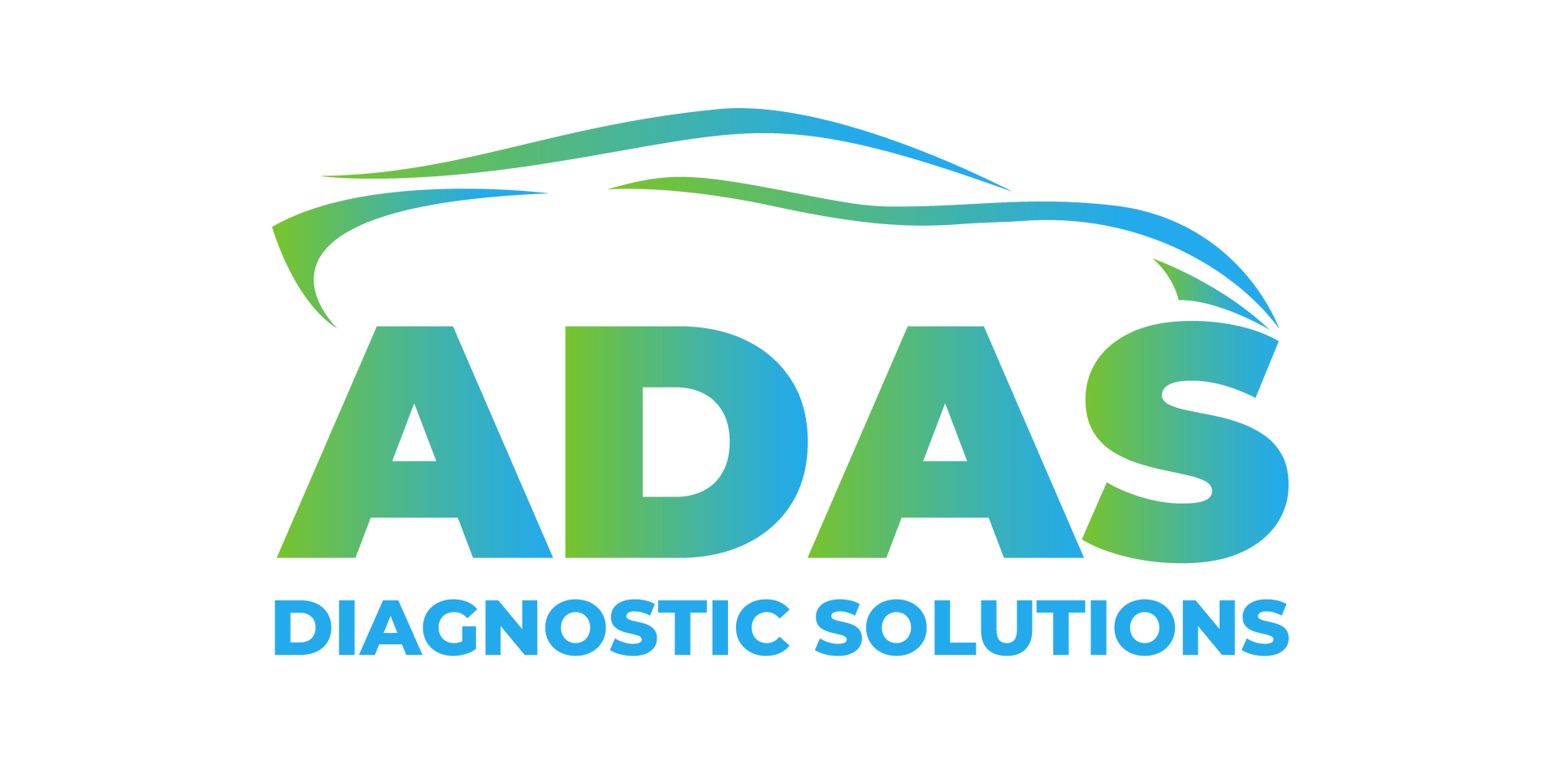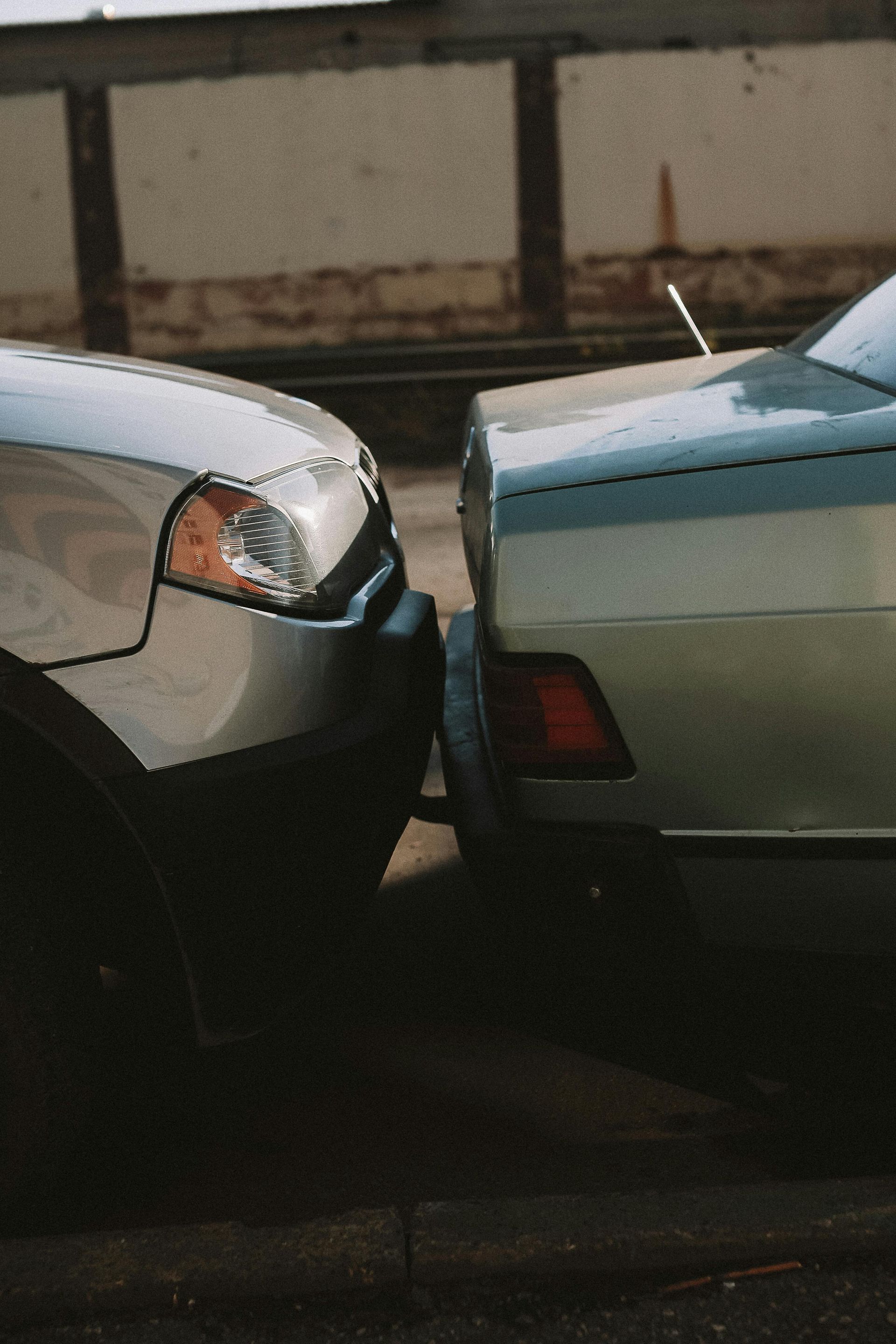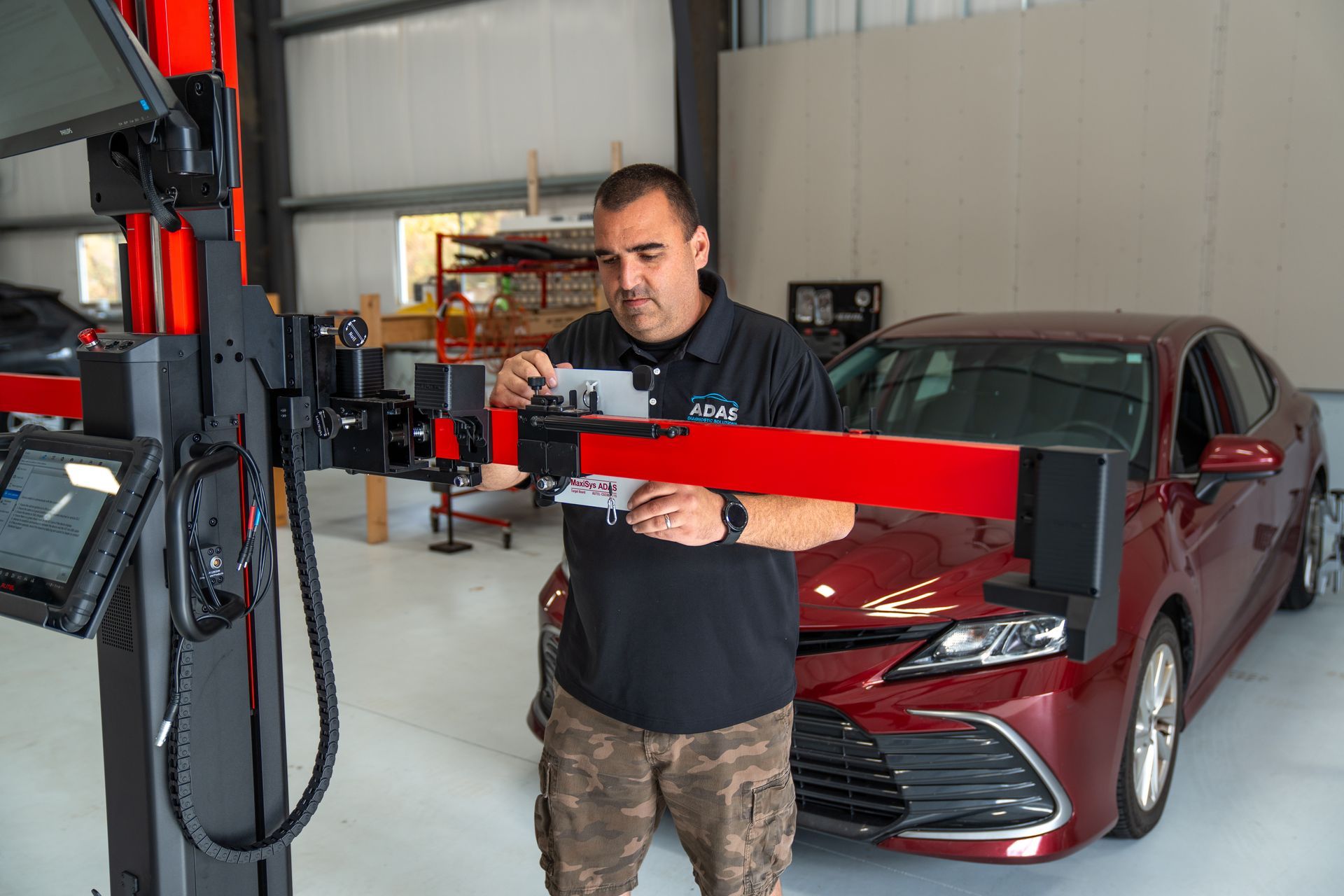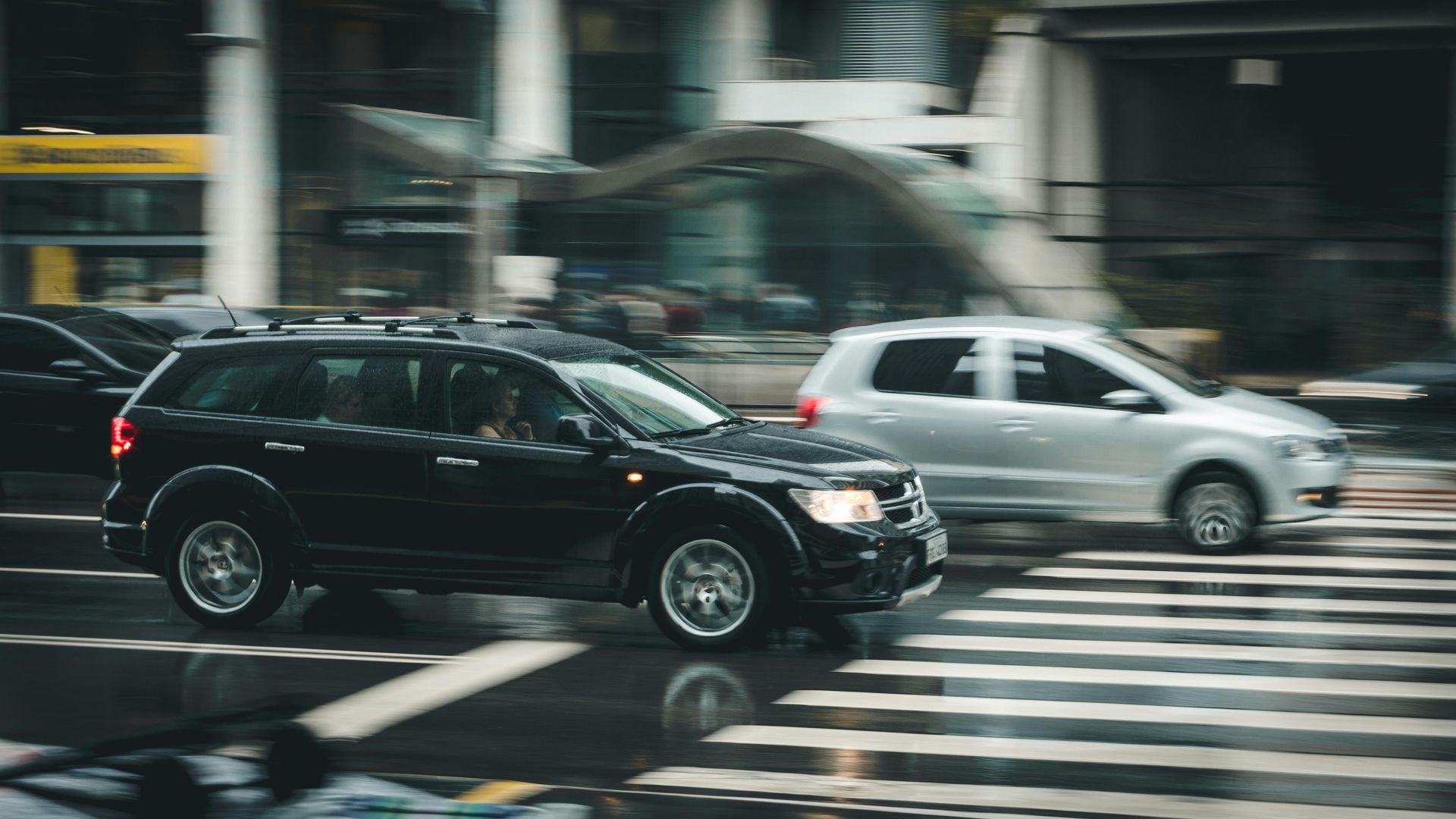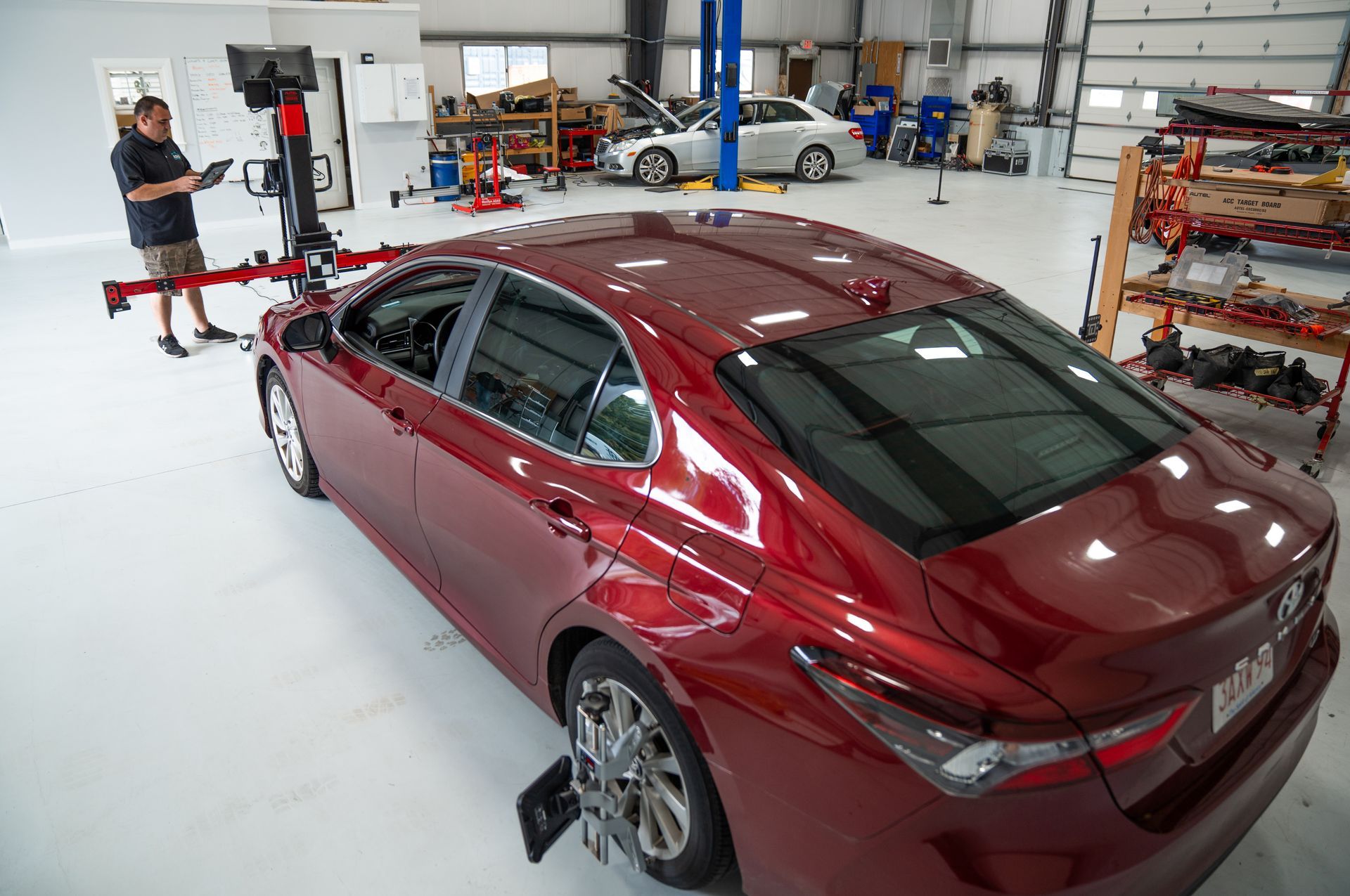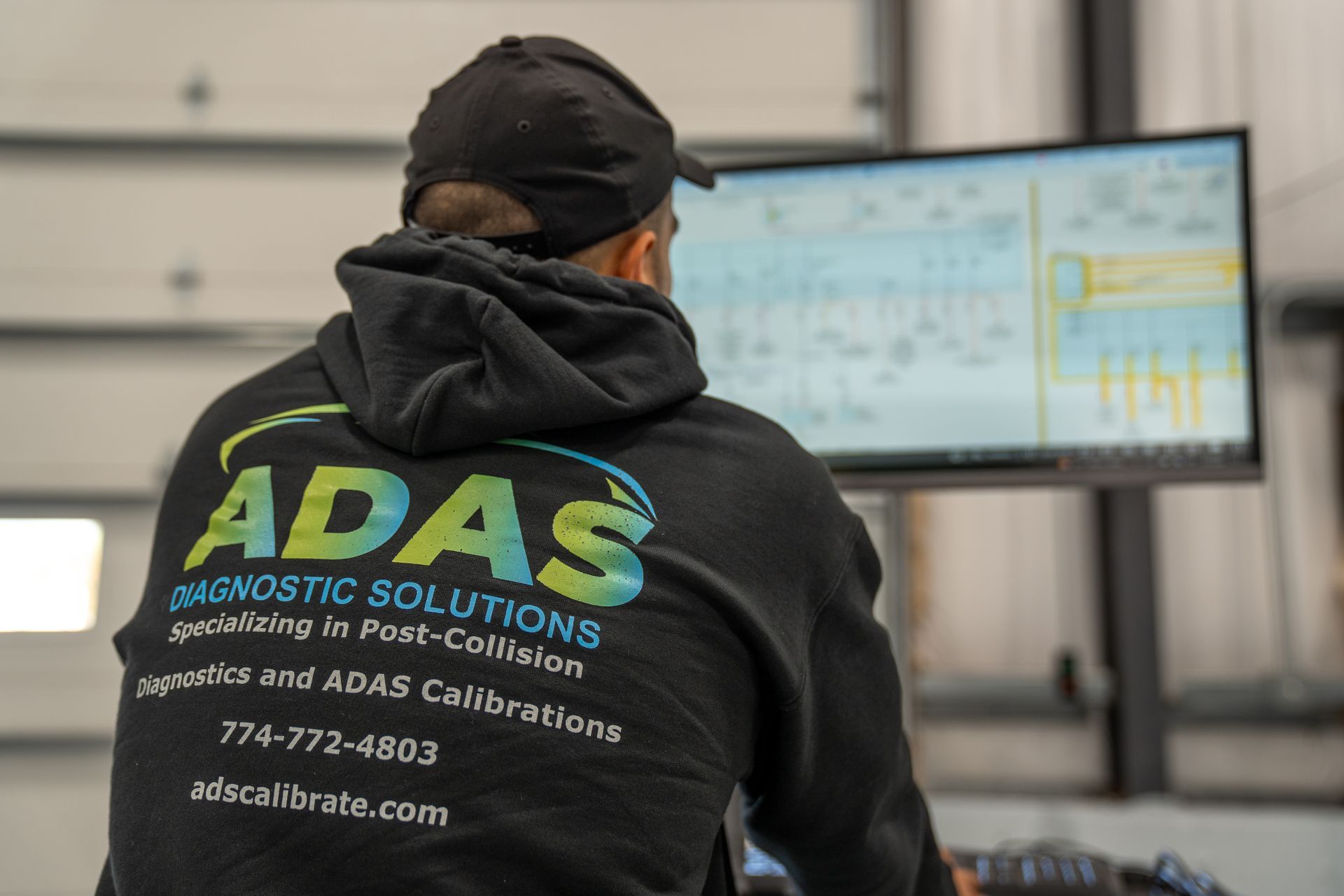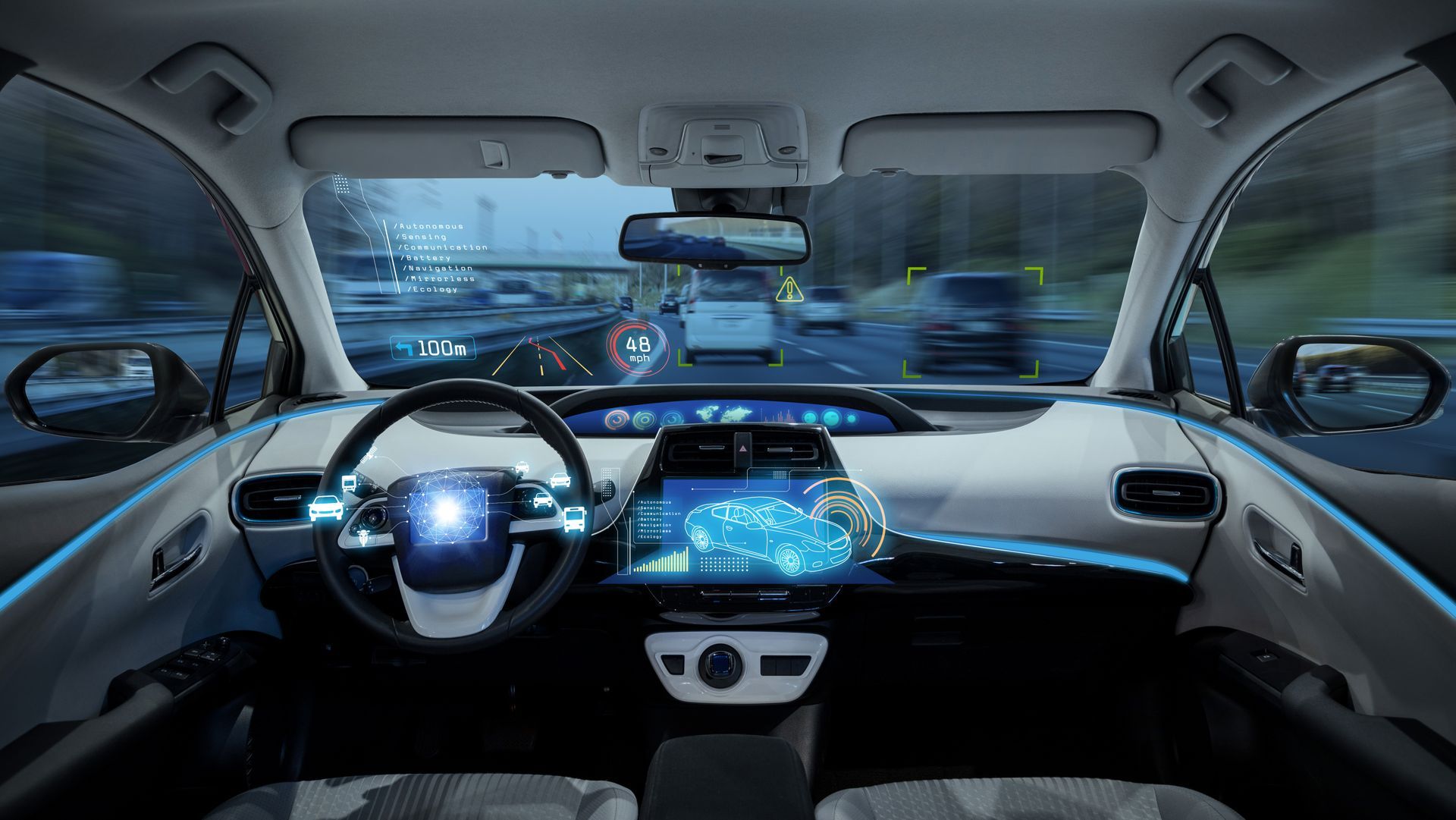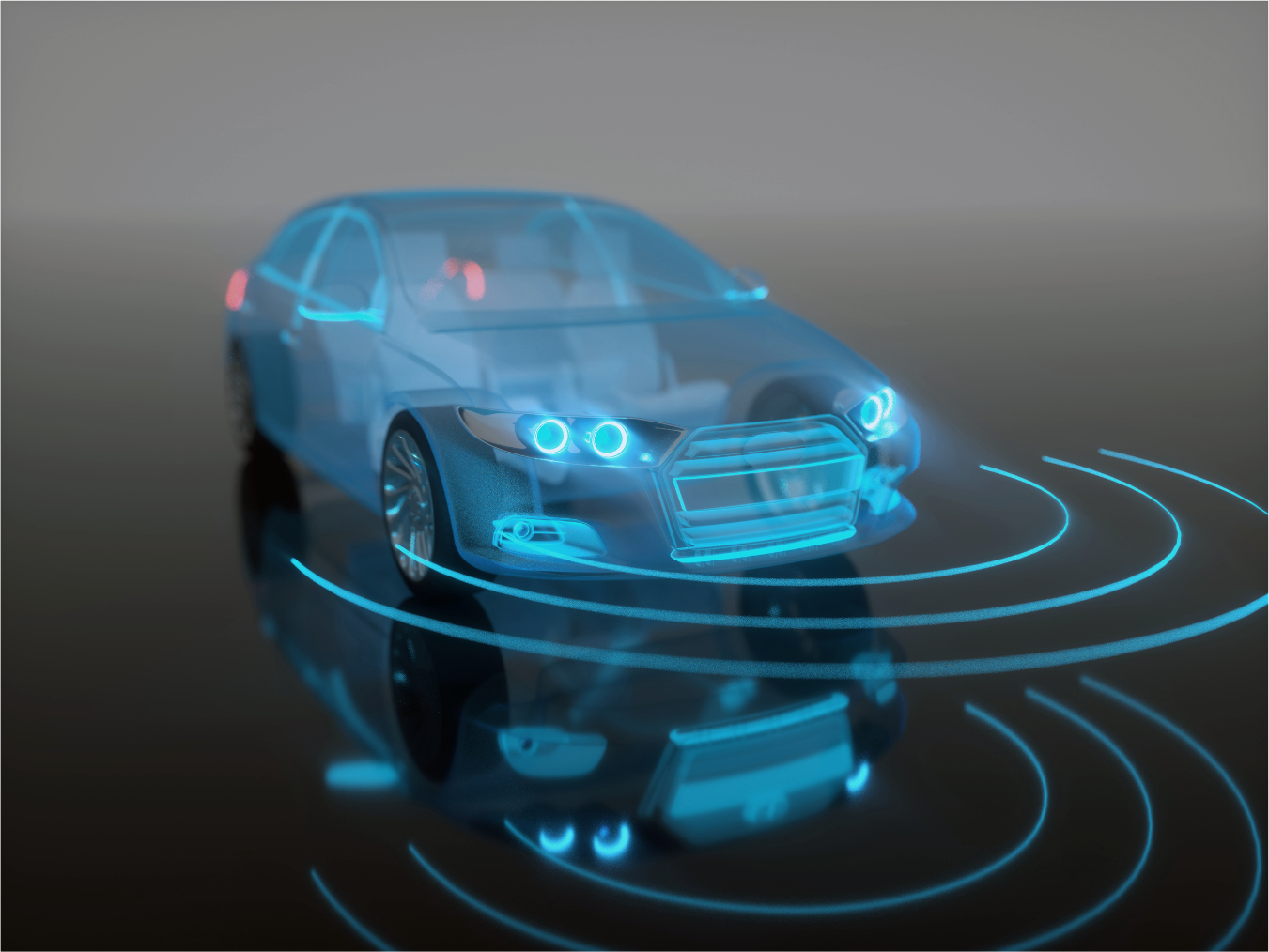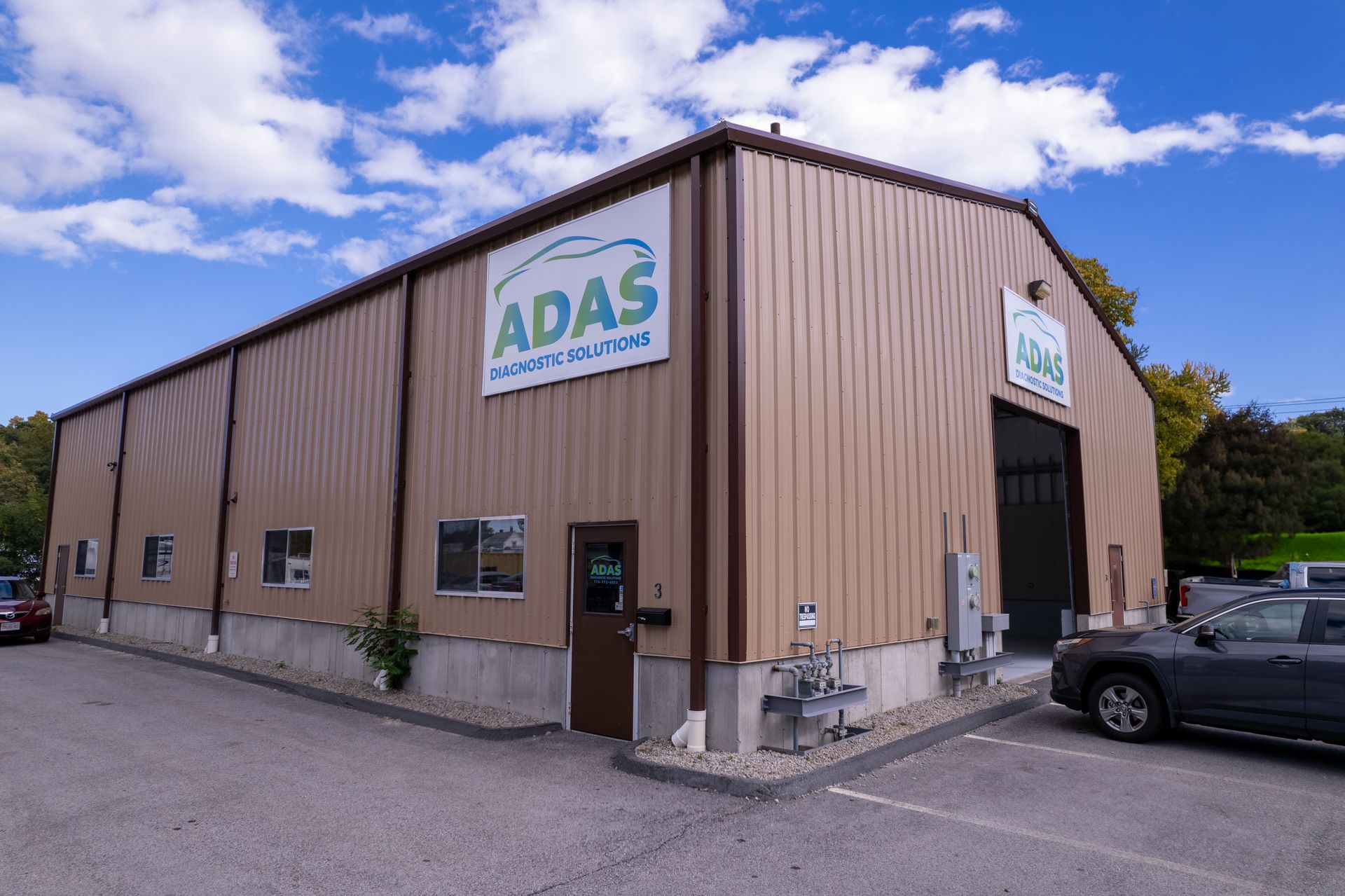A Guide to ADAS Calibration
Why Your Smart Car May Be Making Dumb Decisions
Your car is pretty smart, but is it calibrated correctly? Here’s why, and how, ADAS is the last line of defense between you and a wreck.
It’s rush hour, and you’re going 70 mph down the freeway. Suddenly, your Honda decides that it’s a great time to slam on the brakes — for no apparent reason. Or, your usually precise parking assist guides you straight into a pole. Sounds crazy, right? Welcome to the world where smart cars sometimes make not-so-smart choices.
These head-scratching moments are often courtesy of ADAS (Advanced Driver Assistance System), features that allow your car to parallel park, keep you in your lane, and even prevent you from nodding off at the wheel. Pretty nifty, until they're not because your car's IQ is only as high as its last calibration.
When ADAS systems are out of whack, that's when your genius car starts making dumb mistakes. And you don't want your vehicle failing its driver's ed test at 70 mph.
Buckle up as we barrel into the world of ADAS calibration — the unsung hero keeping your smart car from flunking out on the road.
What's the big deal with ADAS Calibrations?
Imagine your smartphone's GPS thinking you're in Tibet when you're actually in Texas. Not ideal, right? That's what an uncalibrated ADAS is like — a super-smart system with its wires crossed. Here's why calibrations matter.
A Safety Superhero for Drivers
A functioning ADAS system is the difference between your car gracefully avoiding a collision and . . . well, let's not think about the alternative.
Without proper calibration, your lane departure warning might think the road is the sidewalk, or your automatic emergency braking could mistake a shadow for a semi-truck. Calibrations allow each safety feature to remain at the top of its game, ready to spring into action when you need it most.
Keeps Manufacturers Happy and Warranties Intact
Car manufacturers aren't being picky when they insist on ADAS calibrations. They're protecting their reputation and your safety. These companies have invested millions in developing ADAS systems, and they want them to work flawlessly.
Even a minor fender bender can throw off the delicate balance of sensors and cameras. Keeping your ADAS properly calibrated allows your car to perform as advertised. It can also protect your warranty.
Improves Driver Confidence
There's nothing quite like the peace of mind that comes from knowing your car has your back. Properly calibrated ADAS is like having a vigilant co-pilot always on duty. You can trust that your adaptive cruise control won't start playing bumper cars on the highway. Or that your parking assist won't guide you into a pole instead of a parking space.
Your confidence makes driving more enjoyable and can actually make you a better driver, since stress is reduced and you can focus better.
Ensures Compliance with the Insurance Company Processes
Insurance companies have a knack for analyzing risk, and they know that properly calibrated ADAS systems reduce accidents. Many insurers are starting to require proof of calibration after certain repairs. Some are even offering discounts for vehicles with properly maintained ADAS.
Be proactive about your vehicle's repairs and always request comprehensive documentation to ensure your car's ADAS systems are properly calibrated and safe. Getting a gold star from your insurance company could potentially save you money on premiums.
Plus, in the event of an accident, having documentation of proper ADAS calibrations can be crucial in determining liability and smoother claims processing.
Even tiny misalignments can lead to big problems.
We're talking millimeter-level accuracy. Even a misalignment of a few millimeters can cause a cascade of errors in your ADAS.
For example, a slightly misaligned forward-facing camera could mean your lane keeping assist thinks you're drifting when you're actually centered. Or a radar sensor that's off by a hair could misjudge the distance to the car in front of you, affecting your adaptive cruise control.
With ADAS, precision is everything.
Why Calibrations Can't Be an Afterthought
Here's a cautionary tale that shows why proper ADAS calibration after repairs is crucial:
We once had a customer come in after rear-ending another car. Her front radar and camera were clearly off, but she'd been driving around for a week, dealing with random braking at highway speeds.
Yikes!
Imagine cruising at high speeds and your car suddenly decides to slam on the brakes. Not fun, and definitely not safe.
The ADAS calibration process isn’t plug-and-play.
Calibrating ADAS isn’t like updating your phone. It’s more like performing brain surgery (on a car). Here's a look behind the curtain at
our process:
First, investigate
We’re like a detective with a wrench when investigating your car’s history.
Was it in an accident? Did your Honda hit a particularly nasty pothole? Swipe your mailbox with the car’s side mirror? This context is gold.
There are a lot of variables that happen in a collision, both initial primary and secondary damage, which can affect all areas of the vehicle. So, we have to look beyond the obvious damage, investigating every nook and cranny that could affect your ADAS performance.
This detective work is crucial because as we've learned, if something isn’t calibrated correctly, the car doesn't actually know it. While the car is “smart,” it’s not intelligent. We're hunting for clues your car doesn't even have the capacity to know that it's hiding.
Next, technology
Using state-of-the-art diagnostic tools, we communicate with your vehicle's computer systems. It's like a high-tech game of 20 Questions, but instead of yes or no, we're getting complex diagnostic codes and sensor readings.
Our team uses software platforms that search for OEM specific information, but we also investigate other areas. We rely on a combination of platforms or take a DIY approach to research, looking into other client accounts of ADAS examples where certain issues have already been verified.
You know how doctors, even experienced ones, still practice medicine and work at a medical practice? Working with ADAS technology is similar because it's constantly evolving. So, trouble-shooting diagnostics and calibration performance will always need practice.
Everyday we’re seeing vehicles react differently. It’s not about reading what the car tells us, but about interpreting it, cross-referencing it with known issues, and developing a comprehensive understanding of what's going on under the hood (and in the cameras, sensors, and computer systems).
Then, set the stage for precision.
Calibration often requires a precisely controlled environment. We're talking specific lighting, distances, and targets that look like they’ve come from a Spielberg movie.
We use specialized software and targeted measurements to check the system. This thorough process ensures your vehicle meets the manufacturer's exact calibration specifications.
This stage is critical because ADAS systems rely on precise measurements. A millimeter off in sensor alignment could mean feet of difference in object detection at highway speeds. We're creating a controlled environment where we can ensure every adjustment is exactly right.
The final fine-tuning for peak performance.
Using a mix of static and dynamic calibration techniques, we fine-tune each system. It's part science, part art.
The process involves both dynamic and static test drives. In our calibration center, you might see one or even two technicians working on a vehicle simultaneously, using software scan tools. These tools provide real-time measurements and data, so we can make precise adjustments on the fly.
This isn't your average tune-up. We're adjusting camera angles with surgical precision, recalibrating radar sensors to detect objects with pinpoint accuracy, and tweaking software settings to ensure every component works in perfect harmony. Conducting this high-tech orchestra are the manufacturer specifications and our deep understanding of ADAS systems.
We want to emphasize that each adjustment, no matter how small, can have a big impact on your vehicle's performance and safety.
Hit the road to perfection.
We can complete some calibrations quickly, within an hour or two. Others may take several days, depending on either unrelated prior damage or damage from a collision. In some cases, this part of the process can take even longer.
ADAS technology is fairly new, and your average repair shop doesn’t know the minute details and complexities of these systems. Sometimes, the proper repair process wasn’t applied to the vehicle previously, or the incorrect parts were used, so the calibration is off. It can take some time to determine what the problem is and how to fix it.
We’re not just checking off boxes. We’re ensuring every aspect of your ADAS is functioning to manufacturer specifications, so completing a more complex calibration could involve:
- Multiple road tests
- Scenario simulations
- System performance monitoring
You may balk at the time it could potentially take to properly calibrate your car’s ADAS. We understand — it’s not fun being without a car for an unpredictable length of time. This is a valid concern, and it brings us to the million dollar question:
Is ADAS Calibration Really Necessary?
Short answer? You bet your airbags it is.
Long answer? Keep scrolling.
No Warning Lights Doesn't Mean No Problems
Remember the days when a blinking check engine light was your car's way of saying "Houston, we have a problem"? Well, ADAS systems are a whole different ball game.
These systems don't always trigger warning lights when they're misaligned. It's like accidentally setting your alarm to silent — not exactly helpful, and then drifting off to sleep, completely unaware of the next morning’s disaster that’s waiting for you.
So why does this happen?
Because your car's computer assumes all its sensors and cameras are perfectly aligned. If they're not, your car doesn't realize it's getting faulty information. This silent misalignment can lead to your ADAS making incorrect decisions, which is exactly what you don't want from a system designed to keep you safe.
It's a Health Check-Up for Your Car
Just as you wouldn't skip your annual physical (right?) your car's ADAS needs regular check-ups too. Calibration is a full-body scan for your vehicle's brain. It can fix AND prevent problems.
Regular calibrations catch minor issues before they turn into major headaches.
For example, maybe your forward-facing camera is slightly off-kilter, or your radar sensor is detecting objects a fraction of a second too late. These small discrepancies might not be noticeable in your daily commute, but they could make all the difference when you need your ADAS to react in a split second.
Plus, just like how your doctor keeps a record of your health history, regular calibrations create a maintenance record for your vehicle. This helps:
- Facilitate troubleshooting of future issues
- Maintain your car's resale value
- Support various insurance purposes
Maintaining a regular calibration schedule can also help you save money, which brings us to our next point:
Regular calibrations are cheaper than the alternative.
We’re not gonna lie. ADAS calibration isn't exactly pocket change. But compared to the alternative? It's a bargain.
Let’s say you skip calibration after a minor fender bender. Everything seems fine, until your lane-keeping assist fails to, well, keep you in your lane. Or your automatic emergency braking decides to take a coffee break right when you need it most. Now, you're looking at repair costs that make the price of calibration look like spare change.
Or heaven forbid, you get injured in an accident. That could mean several missed paychecks and large medical bills, not to mention the pain and suffering.
But ADAS calibration isn’t just about avoiding accidents.
Properly calibrated ADAS can also save you money in the long run:
- Improving fuel efficiency — Properly functioning adaptive cruise control optimizes your speed and braking.
- Reducing wear and tear — When systems like lane-keeping assist are working correctly, it reduces stress on your steering system.
- Lowering insurance premiums — Some insurance companies offer discounts for well-maintained ADAS.
ADAS calibration is an investment in your safety, your vehicle's longevity, and your peace of mind. When you look at it that way, can you really afford not to do it?
Cars are Becoming Planes
As cars get smarter, calibration will become more crucial. We're talking about a future where your car might do more driving than you do. Scary? Maybe. Exciting? Definitely.
Remember when cruise control felt high-tech? Well, the future of driving is about to make that look like a horse and buggy. Cars are becoming planes, and that's not just hyperbole on our part.
Let's take a closer look into the crystal ball of automotive technology.
Welcome to the Age of the Robo-Chauffeur
Imagine kicking back with your favorite book (or let's be real, your smartphone) while your car handles the morning commute. Sounds like science fiction? Well, it's closer than you think. As cars become more autonomous, they'll be able to handle most driving tasks, leaving you free to, well, do whatever you want!
But as these systems get more complex, the need for spot-on calibration skyrockets. Like tuning a grand piano versus a kazoo, the more sophisticated the instrument, the more precise the tuning must be.
Sensors That Put Your Smartphone to Shame
The eyes and ears of future cars are getting a major upgrade. LiDAR, advanced radar, and cameras are becoming so sharp they could probably count the hairs on a cat crossing the street. These super-sensors will give vehicles an incredibly precise ability to perceive their surroundings.
And it's not just about seeing better. These cars will be thinking better too, thanks to artificial intelligence. They'll be making split-second decisions based on mountains of data, all to keep you safer on the road and make commuting easier and less stressful.
But it’s not all sunshine and rainbows.
It's not all smooth driving into this bright automotive future. There are some challenges to consider:
Safety First, Always
How do we ensure these robo-cars are as safe as possible? And who's responsible if something goes wrong?
Ethical Dilemmas
Imagine a scenario where a car has to choose between two bad outcomes. How do we program ethics into a machine?
Hacking Headaches
With cars becoming computers on wheels, cybersecurity becomes a whole new ballgame.
What's Next?
Fasten your seatbelts, because the future of ADAS is looking pretty wild:
- Chatty Cars — Vehicle-to-vehicle communication could mean your car warns others about that pothole you just hit.
- Your Car, Your Bodyguard — Biometric authentication might make car theft a thing of the past.
- Subscription Salvation —Imagine upgrading your car's features with a simple subscription, no mechanic required.
How We're Gearing Up for the Future
At ADAS Diagnostic Solutions, we're not just watching this future unfold, popcorn bucket in hand — we're actively preparing for it. Our team continues to focus on what we do best:
Investing in technological advancements, not only in equipment, but our processes and training programs.
Our team is always at the forefront of ADAS technology, leading the charge. As cars evolve, our ability to calibrate and maintain them evolves too.
The road ahead is exciting, challenging, and full of possibilities. And just like those futuristic cars, we're ready to navigate it with precision, intelligence, and an unwavering commitment to safety.
Ready to Give Your Car's Brain a Tune-Up?
If you're a driver, insist on proper ADAS calibration after any significant repair or accident. Your future self will thank you.
For our friends in the repair shop business, ADAS calibration isn't just a service — it's a responsibility. It's about sending drivers back on the road with confidence and safety as their co-pilots.
Got questions? Want to learn more? We're always here to
chat about all things ADAS.
